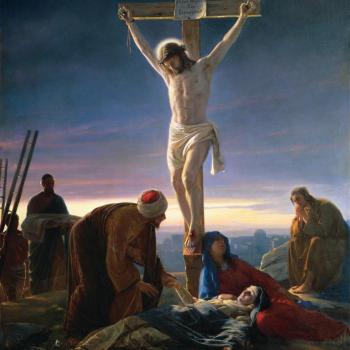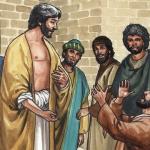It occurs to me, reading these two columns that they speak to each other, in a way.
First, theologian Tim Muldoon’s consideration of the social mindsets and cultural understandings that would have to accompany a national repugnance toward abortion:
These strong women would understand that in other nations where women have recourse to abortion, they do it because of social pressures that drive a wedge between sex and reproduction. They would learn the history of men’s manipulation of women’s bodies, from footbinding and circumcision to breast enlargement, plastic surgery, and hormonal contraception. They would see that societies that make random sex easy make the most vulnerable women beholden to the violent libidos of bad men, and they would lament the social pressures that make women want to be sexy to be noticed, and that make men want to be promiscuous to be relevant. They would make the connection that meaningless sex, because it is so unsatisfying to the human soul, ramps up the two-headed monster of libido and violence, and produces a vicious cycle of sex and abortion. They would marvel at how their sisters in other nations are victims of this cycle without knowing it. They would celebrate the hard-won progress of women’s liberation that allowed them to fully embrace their bodies, their desires for relationships with good men, and their desires to be mothers, among other goods.
It’s a really good piece and I urge you to read it all.
But then check out Dr. Pat McNamara’s recounting of the first publicly acknowledged exorcism in the United States, which took place in 1928:
At times the work was unendurable. An unnatural stench filled the room, and though Emma ate little, she vomited dozens of times daily. She screamed and moaned for hours in unearthly voices “that no human could reproduce.” Witnesses noticed that her “face became so distorted that no one could recognize her.”
Riesinger identified four main spirits operating in Emma. One called itself Beelzebub, another Judas Iscariot. Two were spirits of deceased relatives. One was Emma’s father Jacob, an alcoholic who sexually abused her and placed a curse on her. The other was her aunt Mina, Jacob’s mistress, a child murderer who practiced witchcraft. When Emma was 14, Mina put a spell on her food. Father Theophilus asked the demon’s intent. It answered: “To bring her to despair so that she will . . . hang herself! She must get the rope, she must go to hell!”
I guess what I find so striking is that Muldoon has to imagine a world where people don’t want to kill their babies, while McNamara presents a reality that most would like to believe could only reside in the imagination.
Seems like that’s a reversal of what it should be, doesn’t it? The stories share a kinship, in that there are some who cannot believe either world is possible.
What do you think?

















